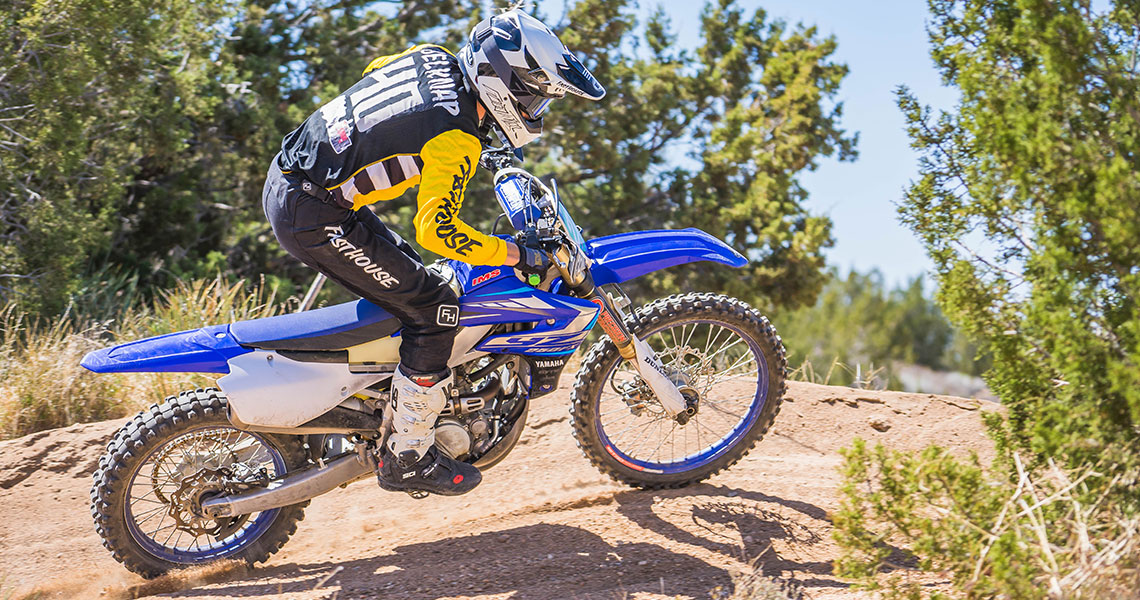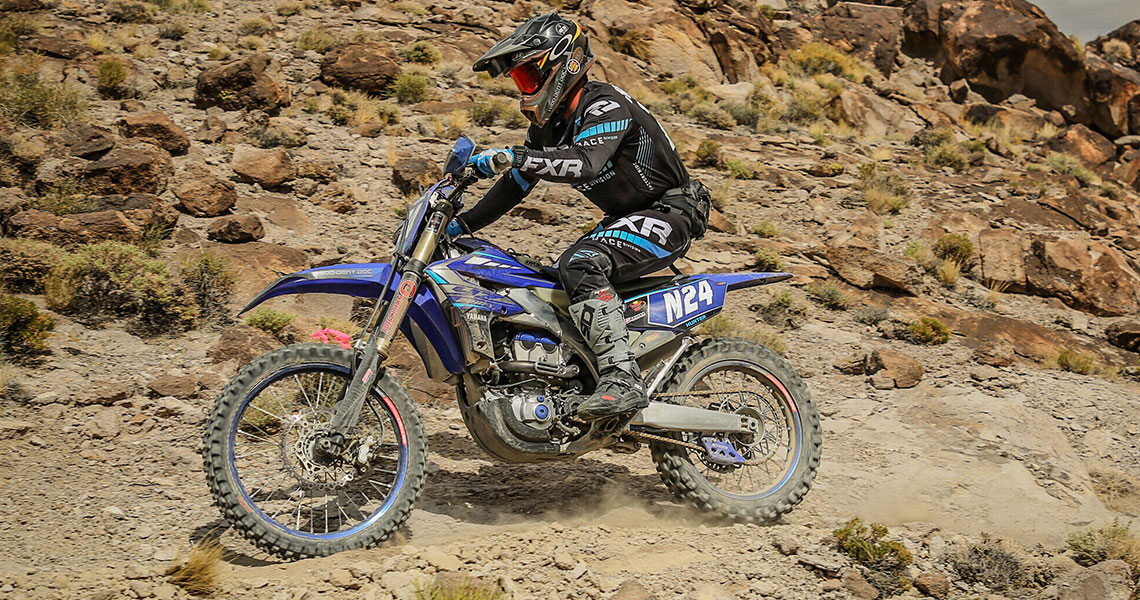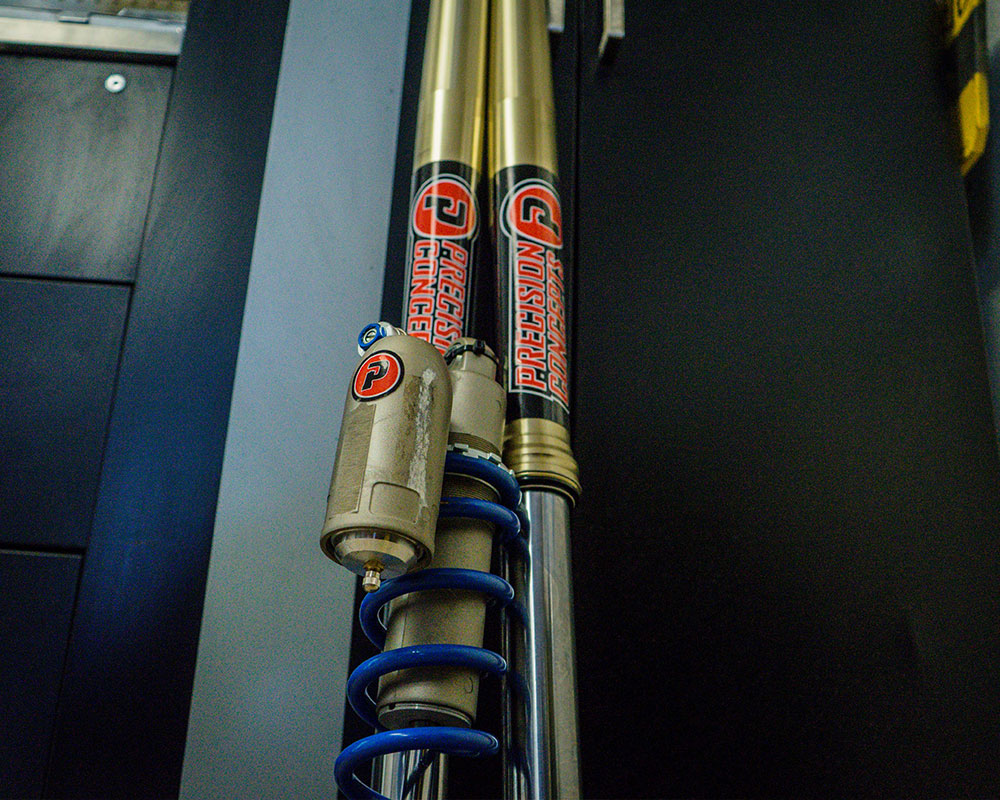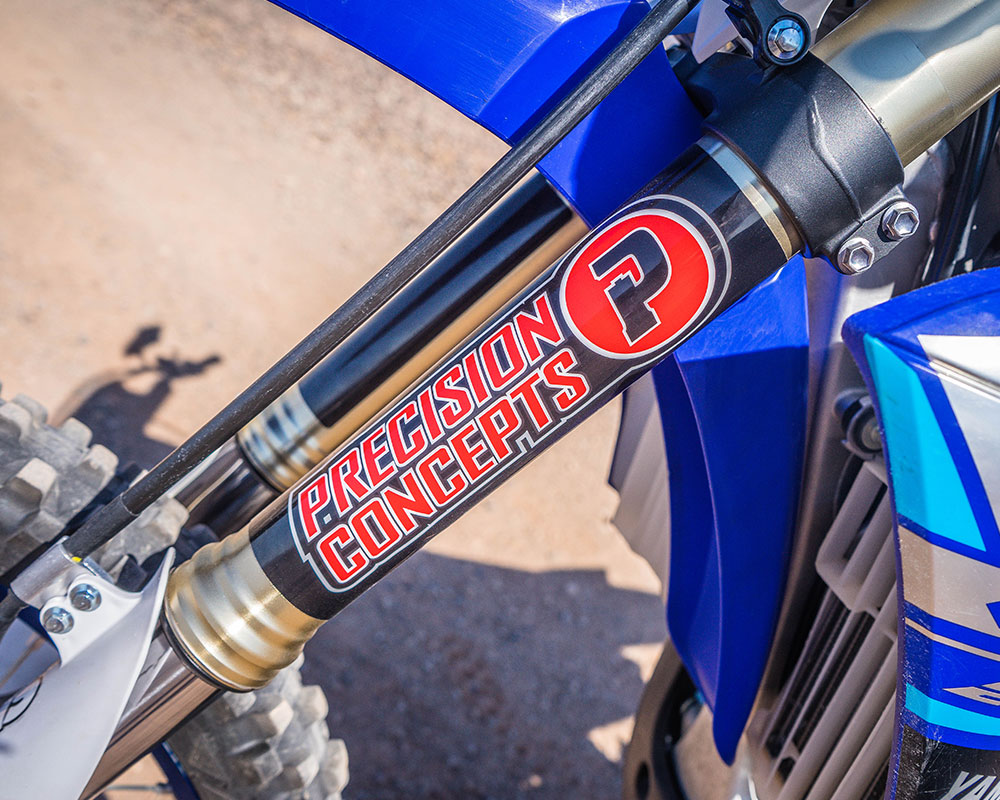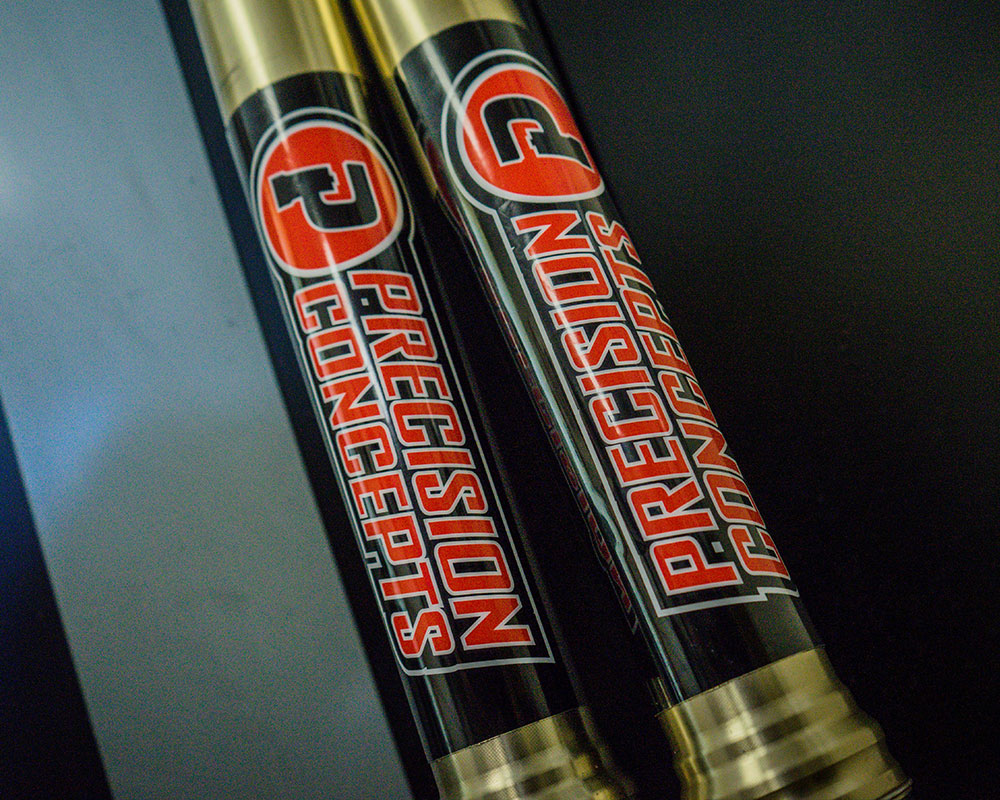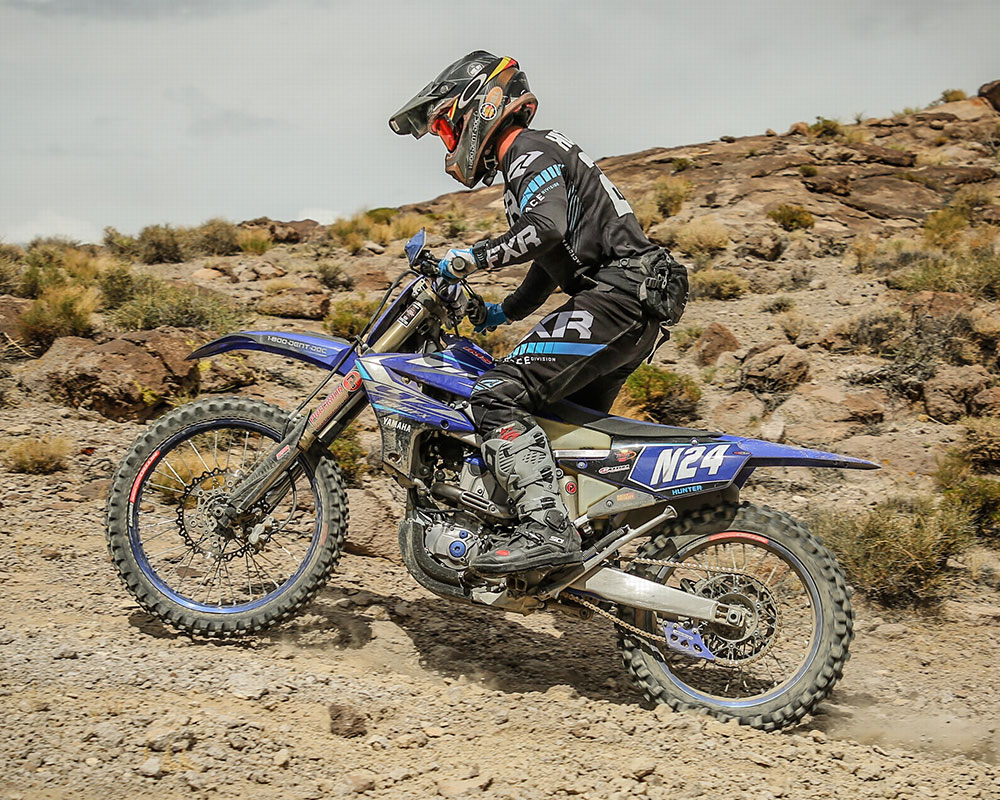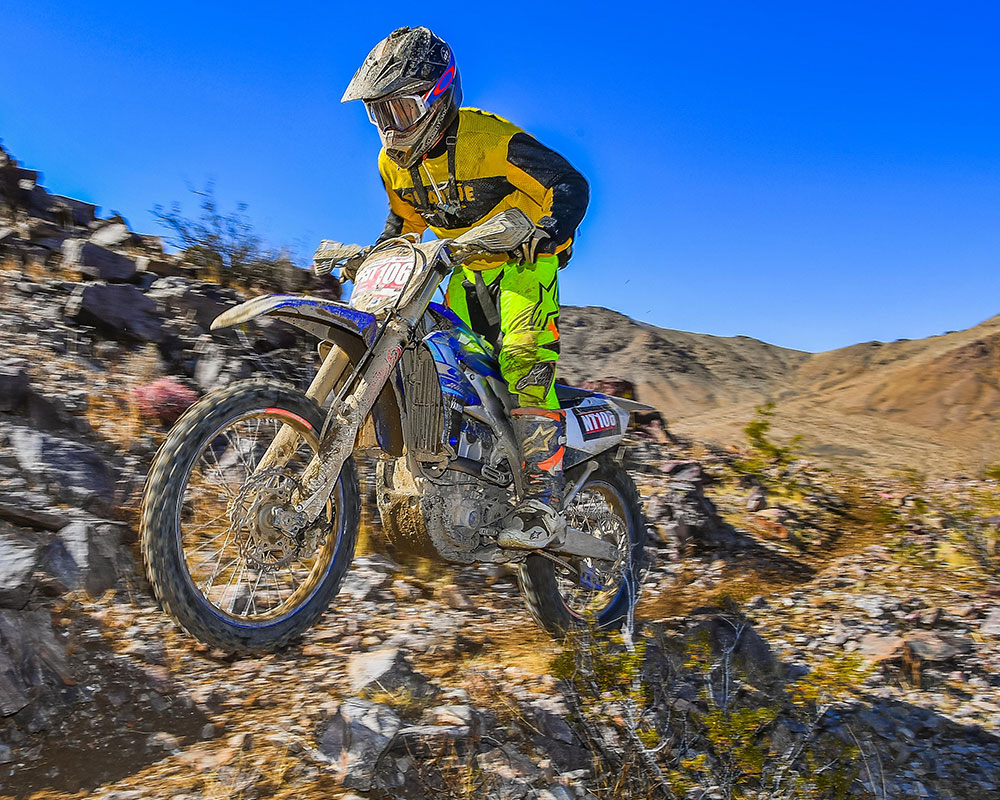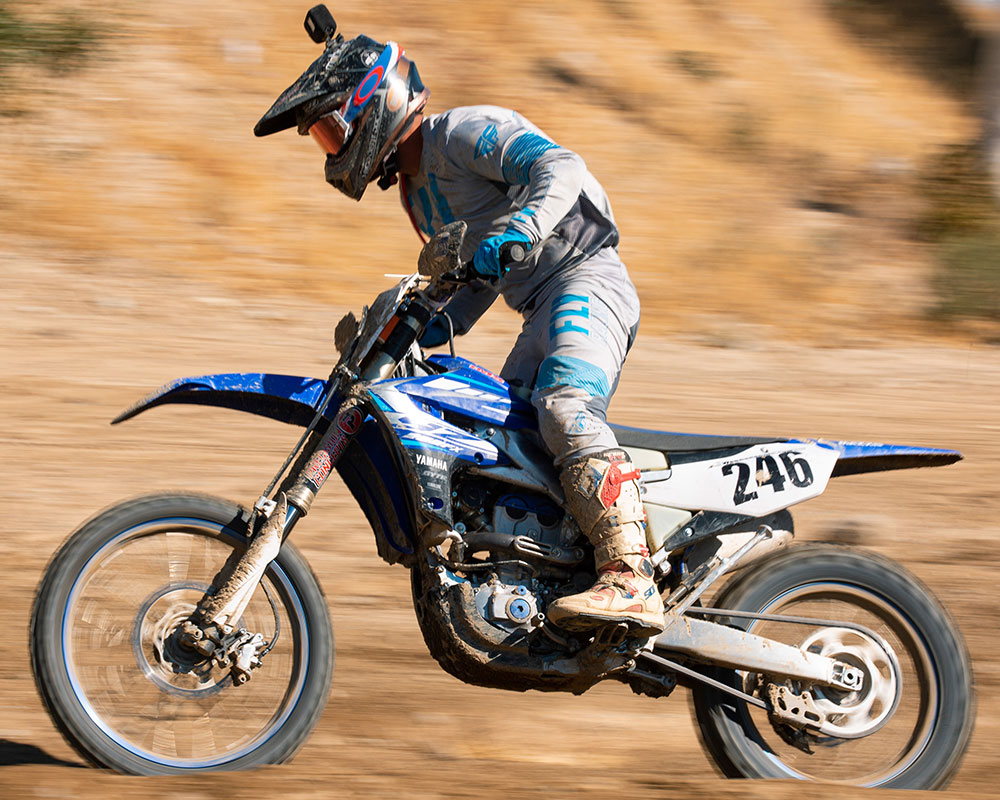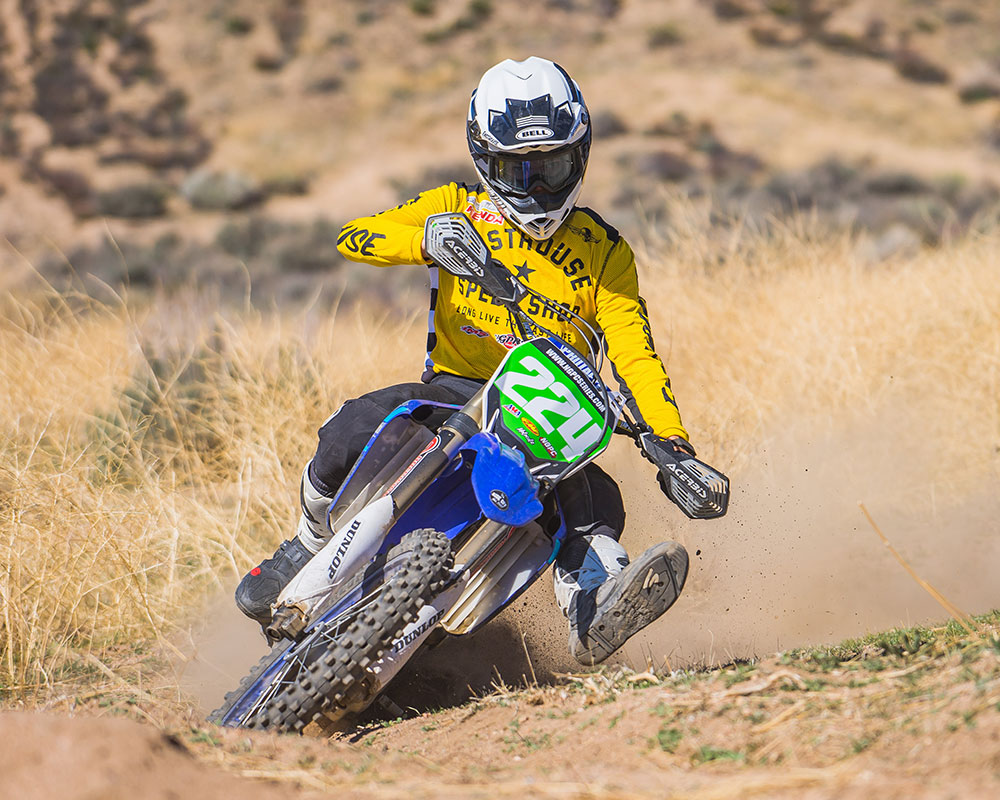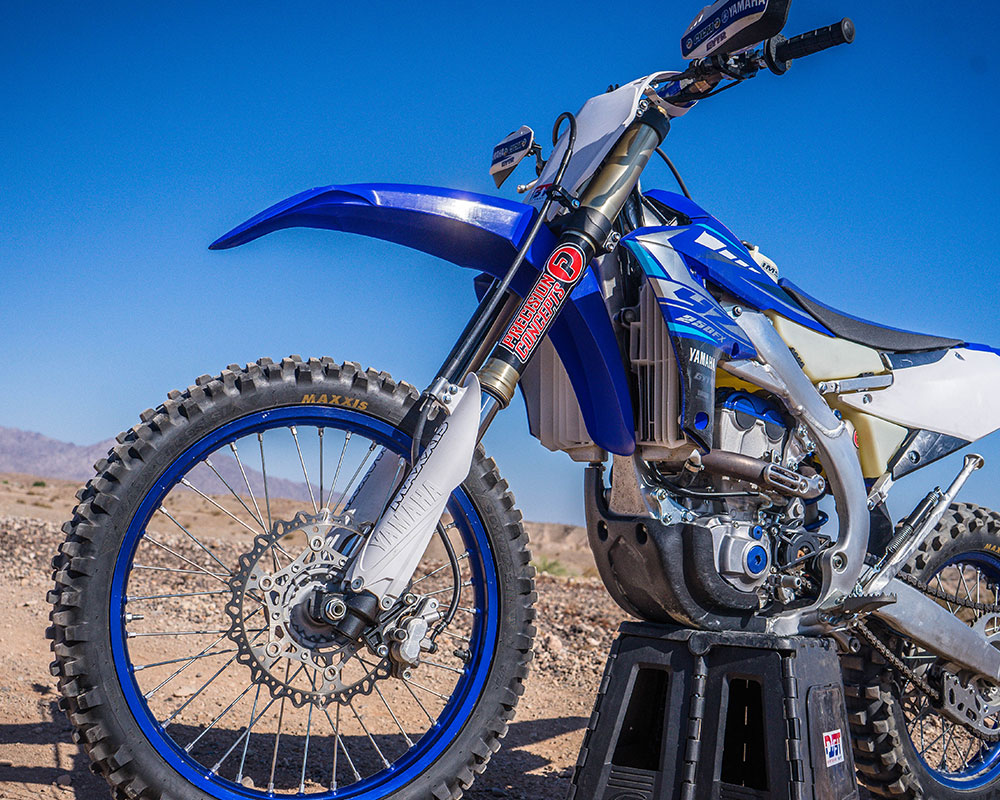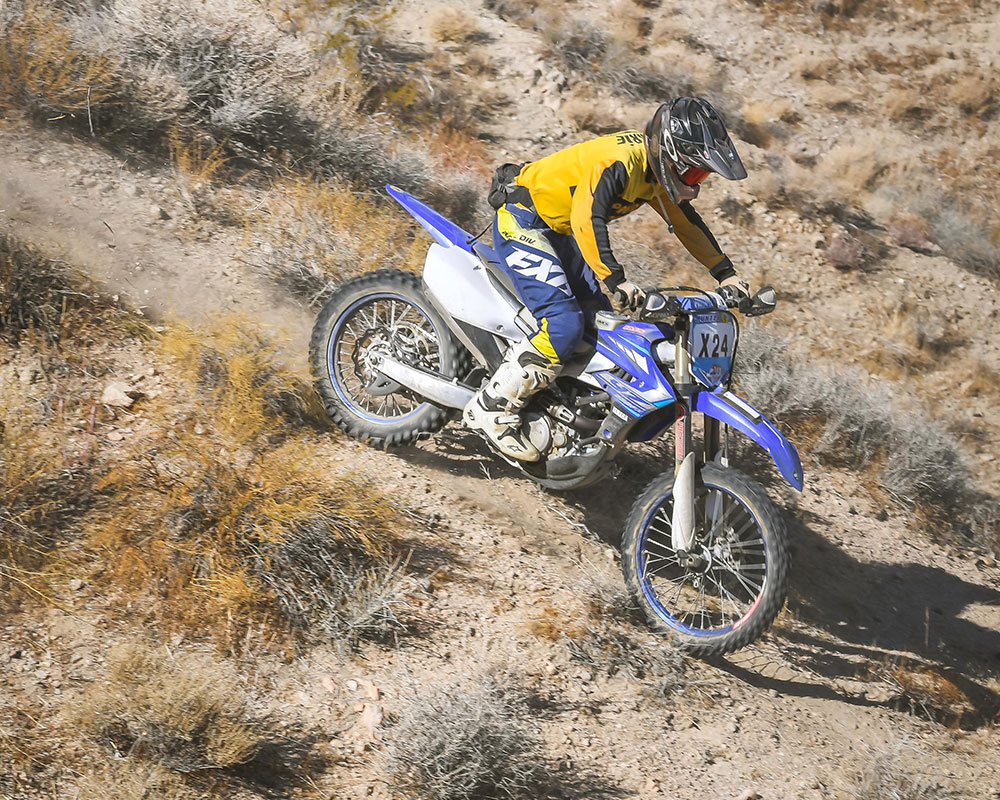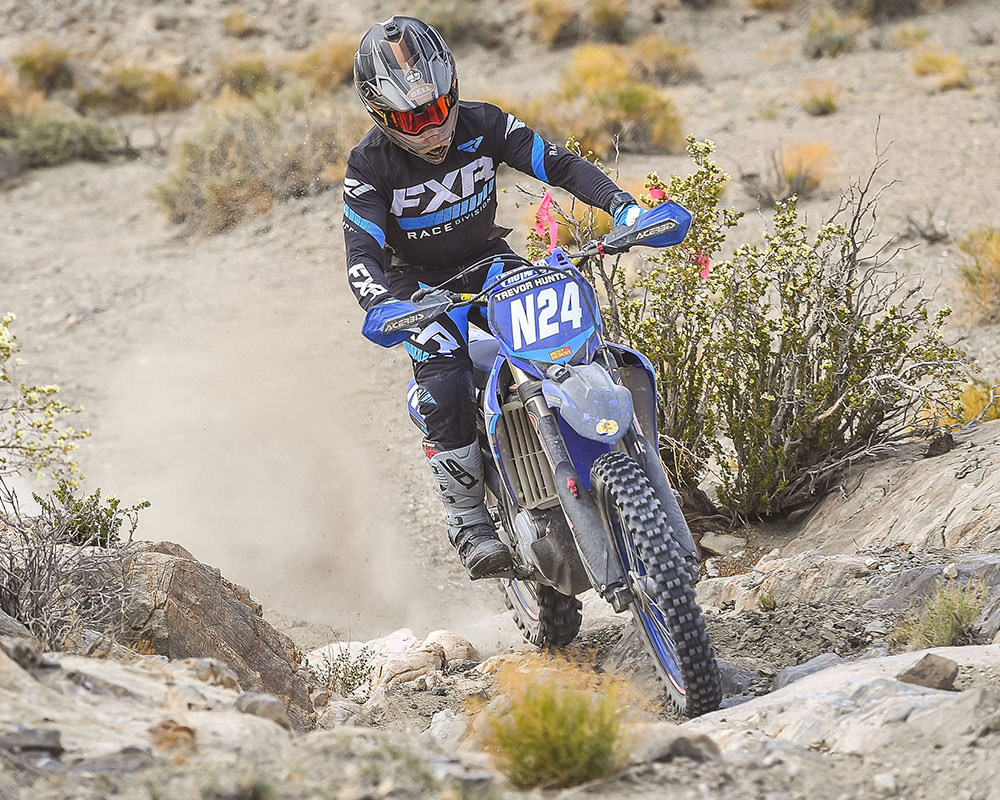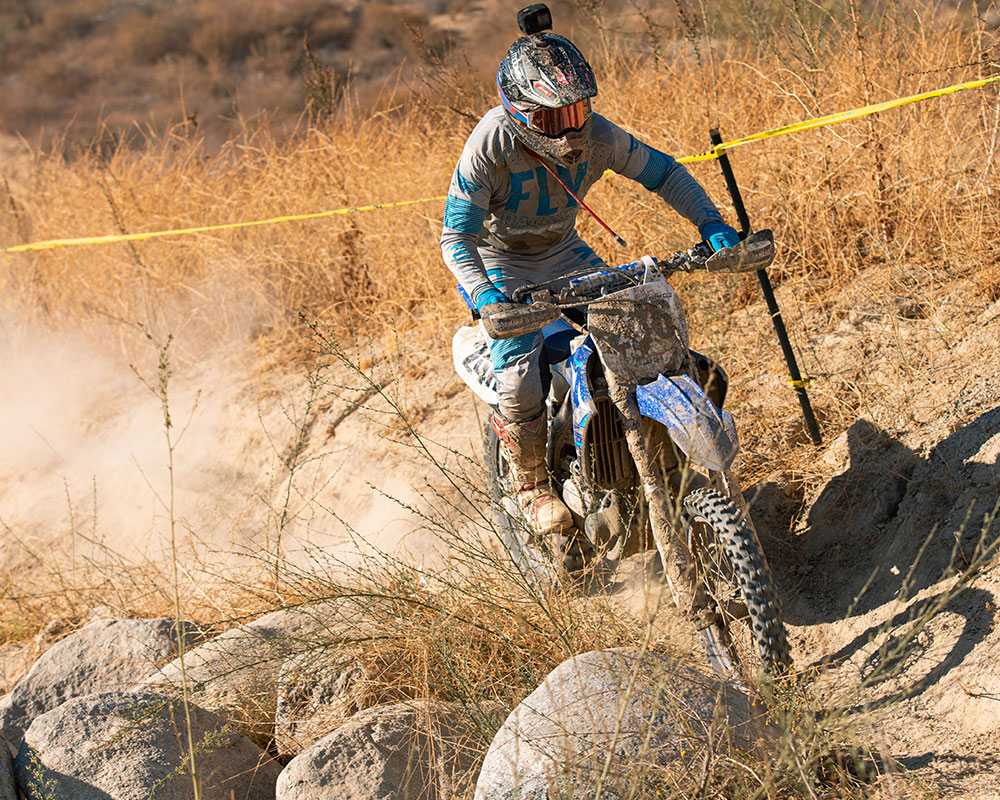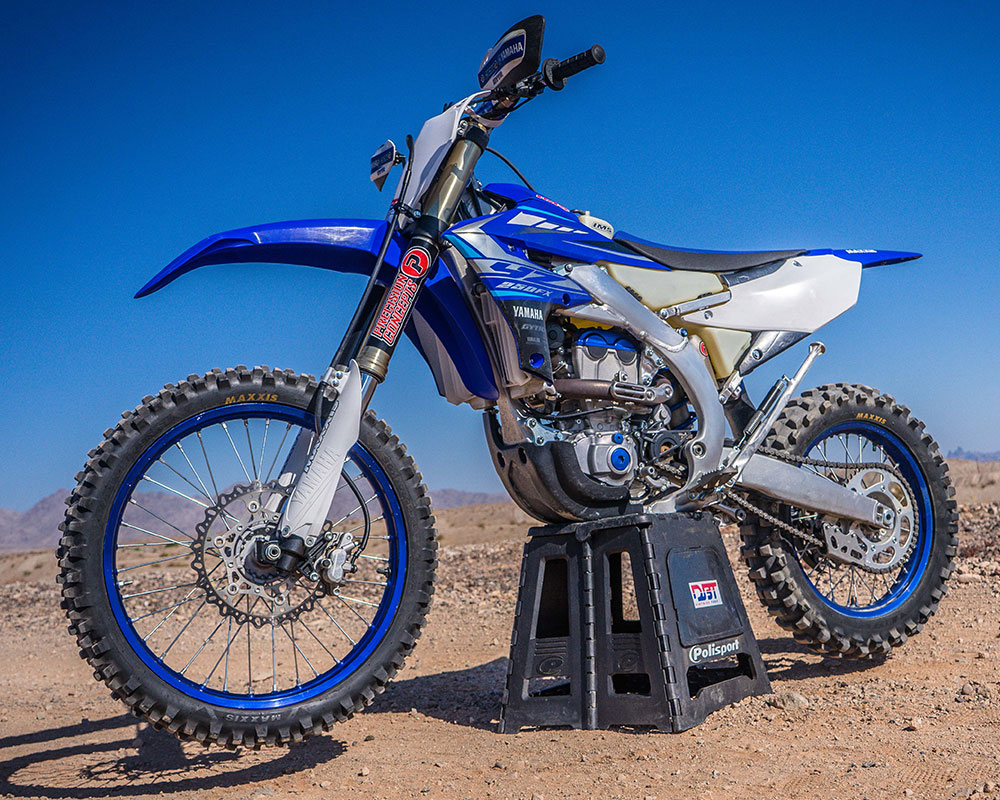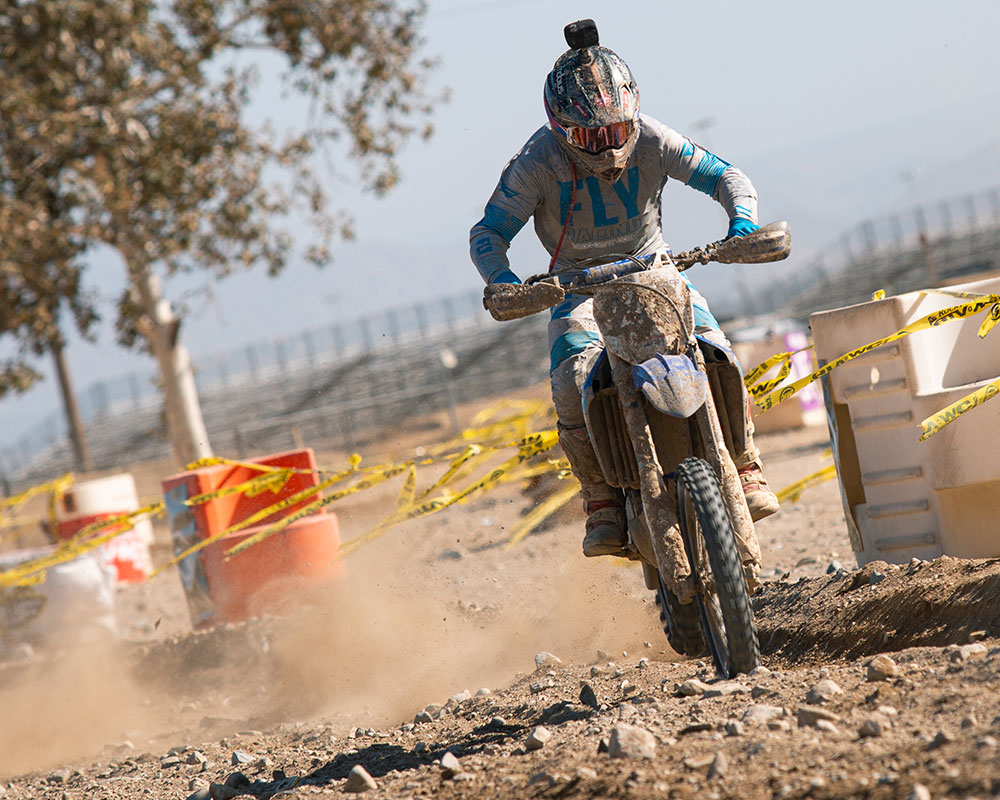Precision Concepts Suspension Revalve For YZ250FX
Company: Precision Concepts
Price: $189+
- More versatile setup.
- Transitions well from off-road to moto.
- Effective mod that improved the bike.
- Took a few tries to dial in a setting.
What it is
- Suspension Revalve & Respring.
Precision Concepts has a long history in west coast off-road, dating back to the mid-90’s when Bob Bell first opened up shop. With decades of personal experience prior, Bob created Precision Concepts Racing to offer his suspension services to the public starting in 1994. As they grew, it led the PC crew to eventually work with American Honda Off-Road building the race bikes and preparing suspension. The partnership led to countless desert racing victories including Johnny Campbell’s run of Baja wins.
Today, Precision Concepts continues with their tried-and-true suspension services, but has also expanded to motor and bike prep, along with housing Kawasaki’s factory supported west coast off-road effort in NGPC and WORCS racing. For our project YZ250FX, we enlisted Precision to revalve and respring our suspension for pro level racing. They work with the Purvines Racing Yamaha team here on the west coast, and all of their 250 riders are consistently at the front of the pack running Precision prepped setups, making us eager to see what makes them so good.
Revalves by Precision start at $189, but vary with parts, fluids, springs, etc. and they will continue to work and help develop settings as needed if it isn’t accomplished on the first attempt, as do most notable suspension companies.
How it works
- Broader setup that can be ridden/raced in any terrain.
- More progressive feel with better bottoming.
In stock trim, the suspension on our 2020 Yamaha YZ250FX is good. Like really good for an off-road bike. For the most part, it’s one of the more versatile suspension setups in the 250F XC racer category. From tight trees and trail riding to fast deserts to the moto track, we were able to get fairly comfortable settings out of the bike with off-road pro level riders on-board. With that being said, we knew there was still room for improvement when racing at the highest speeds. While the suspension was good, it was a little too soft and wallowy for fast and rough GP and desert racing, something we’d be putting the bike through a lot while we have it. And while bottoming resistance is controlled and smooth on the FX in stock trim, we still wanted to avoid bottoming quite so much and build in a little “safety.”
To preface this, I’m one who tends to prefer a stiffer setting than most for off-road, leaning more towards a traditional moto setup. I like to have extra “safety” and bottoming built in to help when the going gets rough and we may hit a bump or come into a corner a little too fast, needing stiffer suspension to prevent blowing through and going over the bars or something of that nature. Kinda of like motors, suspension is a flavor and everyone has their flavor of choice.
When we first received our suspension back from PC, it was much too soft for our liking. It’d blow through on hard landings and in big whoops, and rode too low in the stroke for us. Much to my surprise, it was the exact setting that Big6 Pro2 champion Tyler Lynn had been winning on in the west coast grand prix championships. Although we worked with the clickers, it wasn’t the setting for us and we had to go back to the drawing board.
Like most suspension companies will do, they revalved the suspension in hopes of getting it closer to what we wanted, and having our thoughts on the current setting helped Bob and the crew generate an improved setting on the second attempt. On our second try, Bob upped the spring rates front and rear, along with stiffer valving front and rear to improve bottoming and keep us riding higher in the stroke. Right away, the suspension was night and day better as we broke it in at the Glen Helen WORCS round.
We’re now riding higher in the stroke, giving it a “softer” feel as we start in the plusher valving initially. The forks still retained a lot of comfort like the original Yamaha settings boasted, albeit with more hold up allowing us to charge into corners and get on the brakes harder. Likewise, the shock didn’t wallow nearly as much, staying higher in the stroke, absorbing bigger hits without kicking or deflecting, and following the ground better. Still, the Precision crew was able to maintain the comfort level of stock while boosting the “performance” characteristics.
We took the bike to some rough sand tracks and raced it at the notoriously rough Lake Havasu GP, a sand track littered with 5’ sand whoops and the harshest square edged, hard packed chop. There, we stiffened up the clickers and added some additional fork oil from 295cc to ~320cc to get a little extra bottoming out of the fork in the predominantly large sand whoops. This helped balance the bike out and was a little more confidence inspiring as we tackled the frightening whoops, but we still felt like there was just a little more room for improvement. Though we didn’t necessarily want a bike set up for Havasu whoops, being able to better setup a bike for something of this nature was a goal of ours. As it sat, the bike was very good in the desert, closer to the edge of being really good on GP tracks, but too soft for moto and for rough sand tracks. Our next goal would be to “decrease” its performance in the desert and to “gain” performance in the rougher terrain where stiffer setups are needed.
Interestingly enough, after we had asked for stiffer settings, several of the Yamaha supported racers started trying settings that resembled ours and most gravitated towards it full time. With this, it led Bob to diving deeper into the settings, and he found that Yamaha’s outer fork oil capacity had been bumped up to 365cc, the same that their Kawasaki’s have been running. The newfound fork oil height, along with even stiffer valving developed with one of the Purvines racers, was then installed in our suspension when it came time for a rebuild.
The third setting we tried is what we’ve stuck to and have really come to enjoy on the 250FX. Yamaha’s YZ250FX is a really good all-arounder. The motor and transmission lend itself to true off-road with a semi-wide ration tranny, but its YZ250F roots still allow it to perform quite well on the moto track and GP circuits. We found this latest Precision Concepts suspension setting to align with that trait, as it’s a very versatile setup that we can find a really good setting on pretty much anywhere we want to go. When riding strictly moto, we can stiffen up the compression to get a little better bottoming for big jumps and harsh landings. When racing in the desert, we can soften the compression to get the added comfort and plushness needed to avoid deflecting in the rocks and slow speed terrain.
I came into this test knowing what I liked and what I thought I didn’t like, but the Precision Concepts suspension has shown there’s more than one way to skin a cat. The added plushness this PC setup has over a stiffer setting allows the wheels to feel the ground and find traction when there isn’t much to be had, something common in off-road racing. Additionally, the suspension moves freely with no harsh spots and a progressive, semi-firm move through the stroke. The bottoming is very good, feeling more controlled and smooth than stock which is tough to do on the Yamaha’s. Out back, the shock is more planted and drives through the acceleration chop with no deflection or hanging up. In addition, the bike feels more balanced and more precise overall, as it doesn’t see-saw back and forth quite as much and it’s more reactive to rider input with a stiffer setting.
We’ve put in quite a few races on this suspension and with some success to boot. The same settings with just minimal clicker changes have seen the bike podium Pro 250 races in National Hare and Hounds and District 37 desert races, Top 5 Overall at the Best In The Desert Tonopah Hare and Hound World Championship, win some SRA Grand Prix’s, and Top 10 NGPC/WORCS Pro 250 races.
The YZ250FX has seen improvements with the Precision Concepts setting as it’s even more versatile now than before. The suspension has proven itself in every condition and terrain, and even with a mixed variety of riders on-board. We’ve had vet racers ride and race this bike and without touching a clicker, they too are very happy with the handling of the bike.
Leave a Reply
